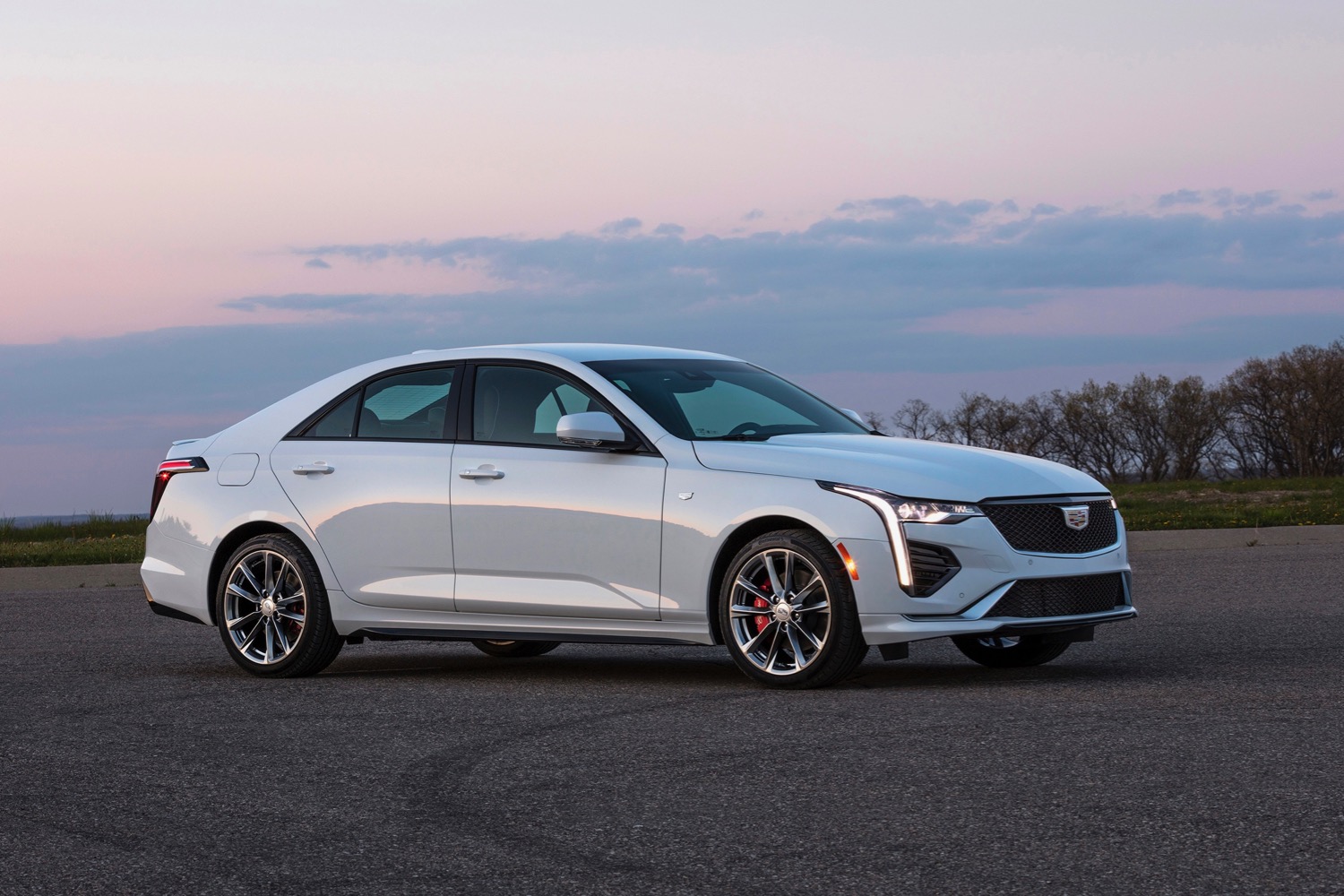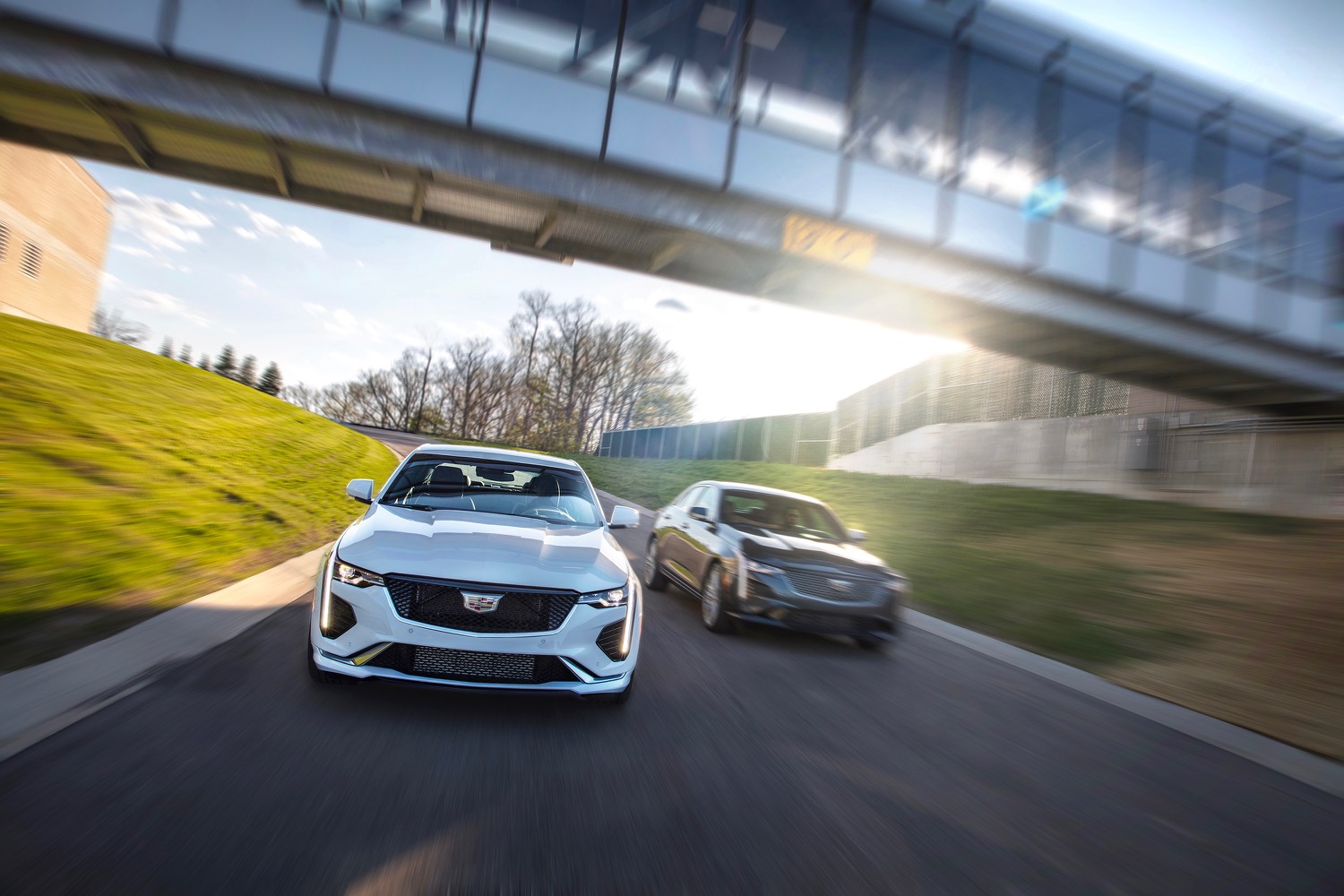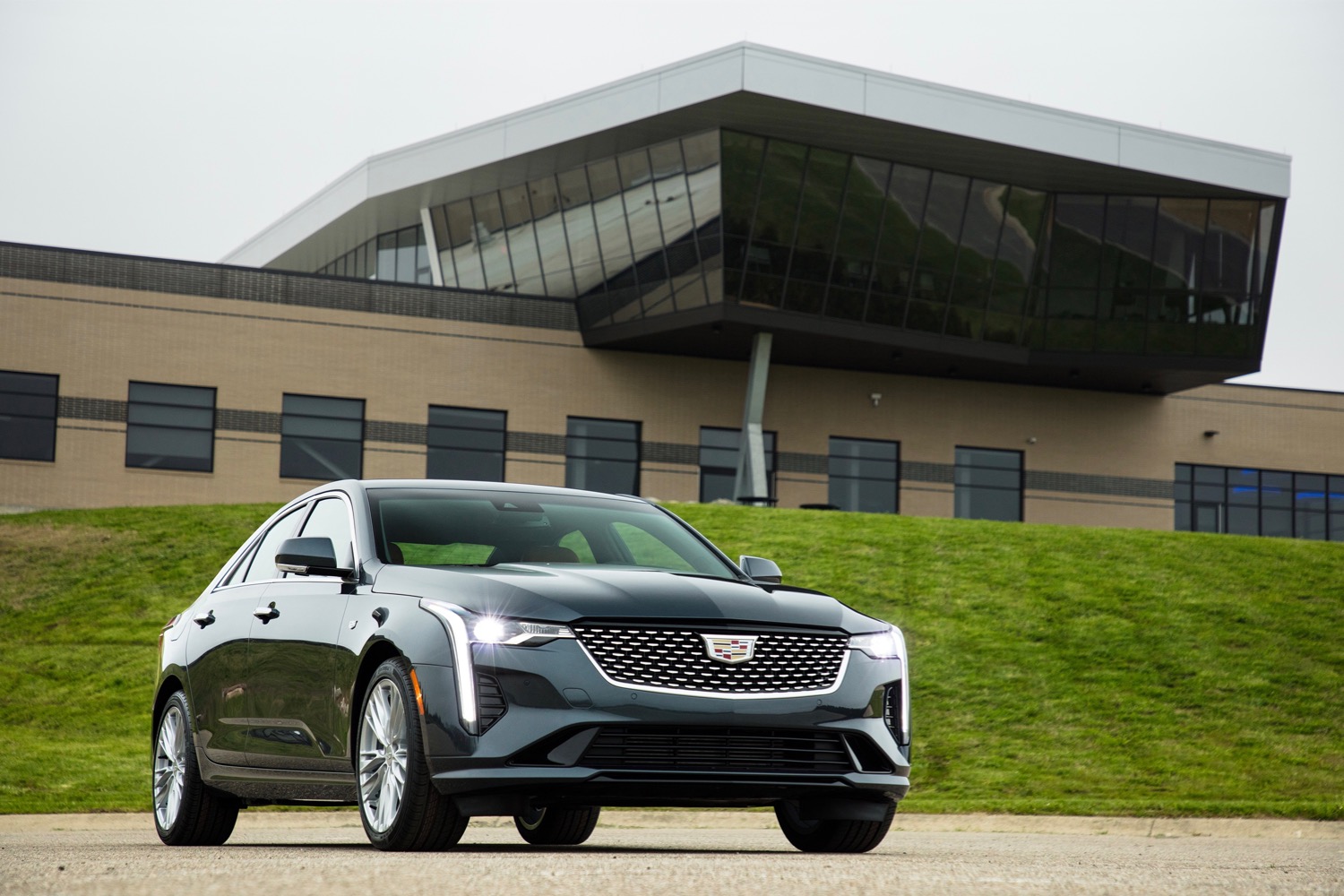Following the reveal of the CT5 sedan, Cadillac is unveiling a little sibling called the CT4. The new sedan replaces the ATS in Cadillac’s lineup, offering more tech features, including Cadillac’s sophisticated Super Cruise driver-assist system.
If the CT4 looks familiar to you, that’s because it is. Cadillac has already shown the V-Series performance version of the new sedan. The exterior styling is basically a shrunken version of what you get on the CT5. The overall look is a bit more expressive than the old ATS, but not as elegant. The CT4 competes against cars like the Audi A4, BMW 3 Series, and Mercedes-Benz C-Class.
Like the ATS, the CT4 is based on a rear-wheel drive platform for better driving dynamics, while all-wheel drive is available as an option. Base models get a 2.0-liter turbocharged four-cylinder engine making 237 horsepower and 258 pound-feet of torque, mated to an eight-speed automatic transmission. An optional 2.7-liter turbo-four makes 309 hp and 348 lb-ft, and is mated to a 10-speed automatic.
The CT4-V performance model gets the 10-speed automatic and 2.7-liter engine, but tuned to produce 325 hp and 380 lb-ft. That seems a little weak compared to past Cadillac V-Series models, but the General Motors luxury brand has promised that a more powerful version is on the way. The CT4-V also gets a limited-slip rear differential, Magnetic Ride Control adaptive dampers (on rear-wheel drive cars only), and upgraded brakes, so it should still be livelier to drive than non-V CT4 variants.
The CT4 will be the latest model to get Cadillac’s Super Cruise system. Using an array of sensors, Super Cruise allows what Cadillac calls “hands-free” driving on over 200,000 miles of highway in the United States and Canada. Unlike competitor systems such as Tesla Autopilot and Volvo Pilot Assist, Cadillac also uses a driver-facing camera to ensure that the driver is ready to take back full control if need be. Cadillac said Super Cruise will be available on the CT4 in “calendar year 2020,” so it may not be ready when the first cars hit showrooms. Order books for the sedan open later this year.
Cadillac didn’t offer many details on the infotainment system, but did say the system would include an 8.0-inch touchscreen. The CT4 also uses Cadillac parent General Motors’ new electrical architecture, which was designed to enable faster signal transmissions within the vehicle to improve the performance of electronics, as well as enable over-the-air software updates.
The 2020 Cadillac CT4 starts at $33,990 for a base Luxury model with rear-wheel drive. Adding all-wheel drive to the Luxury trim level costs an extra $2,600. One step up from the Luxury is the Premium Luxury, which starts at $38,490 with rear-wheel drive and $41,690 with all-wheel drive. Next up is the Sport, which starts at $39,590 with rear-wheel drive and $42,190 with all-wheel drive. Finally, the CT4-V starts at $45,490 with rear-wheel drive, while all-wheel drive is an $1,100 option.
Cadillac is in the midst of retooling its lineup. In addition to the CT4 and CT5 sedans, the automaker recently launched the XT6 crossover, as well as a refresh of the smaller XT5. An all-electric Cadillac crossover is in the pipeline as well.
Updated on October 10, 2019: Added pricing information.
Editors' Recommendations
- Cadillac aims to balance its lineup with a small electric SUV
- The 2020 Cadillac XT5 is a small luxury crossover your smartphone will love
- Cadillac confirms V-Series performance versions of the CT5 and CT4






